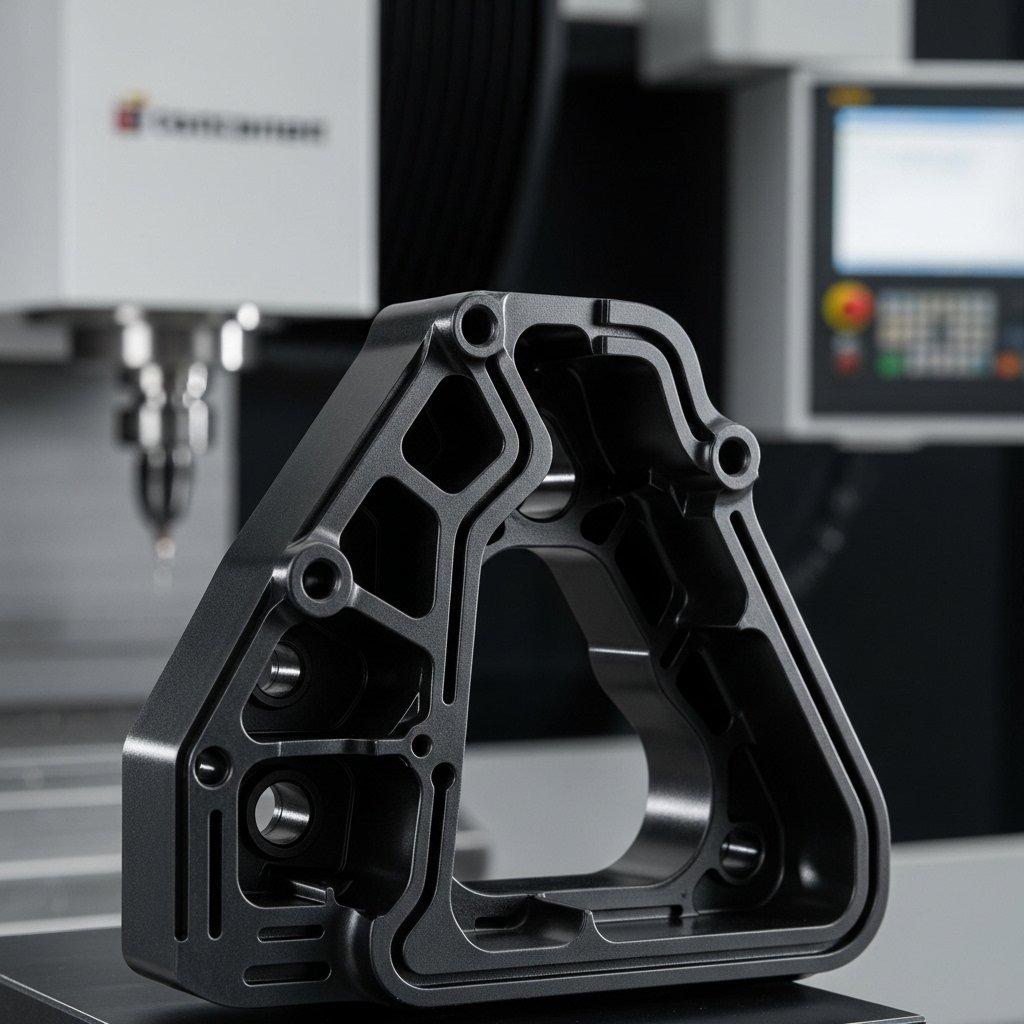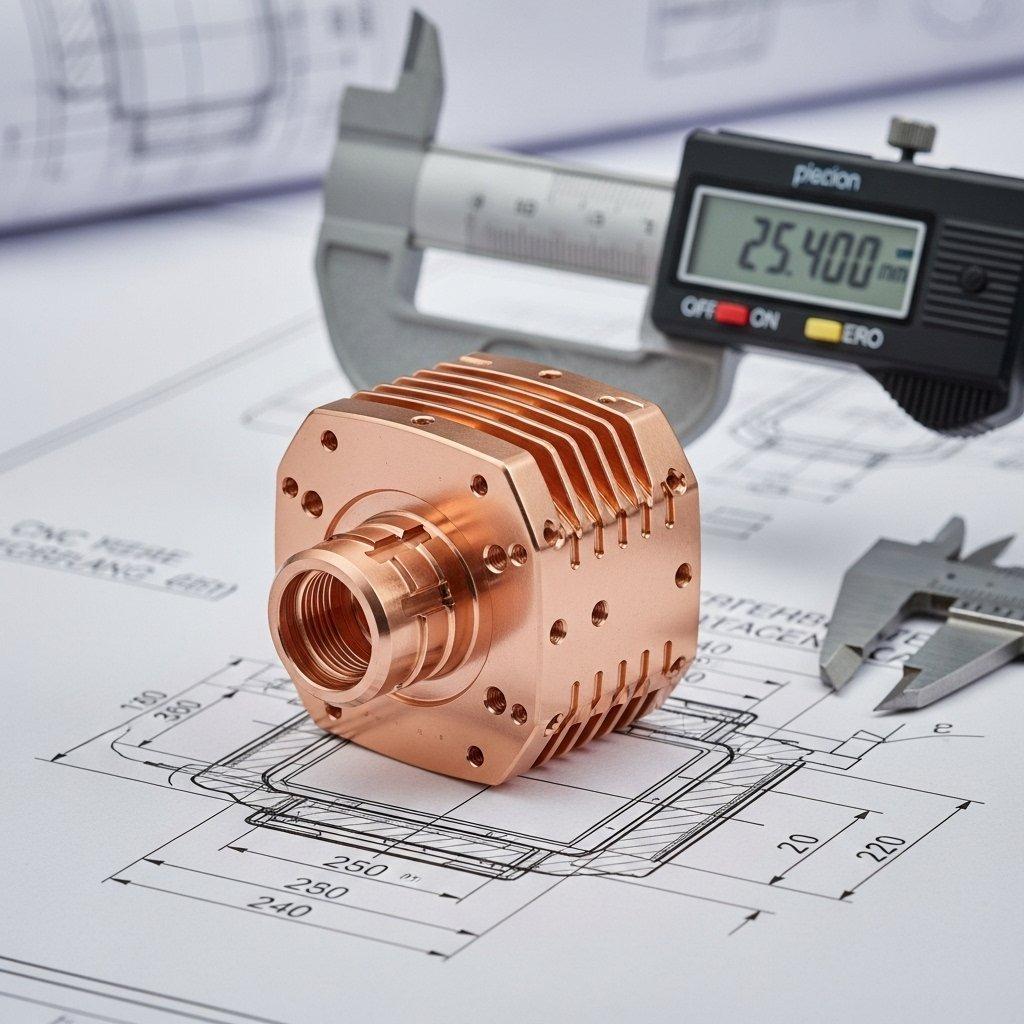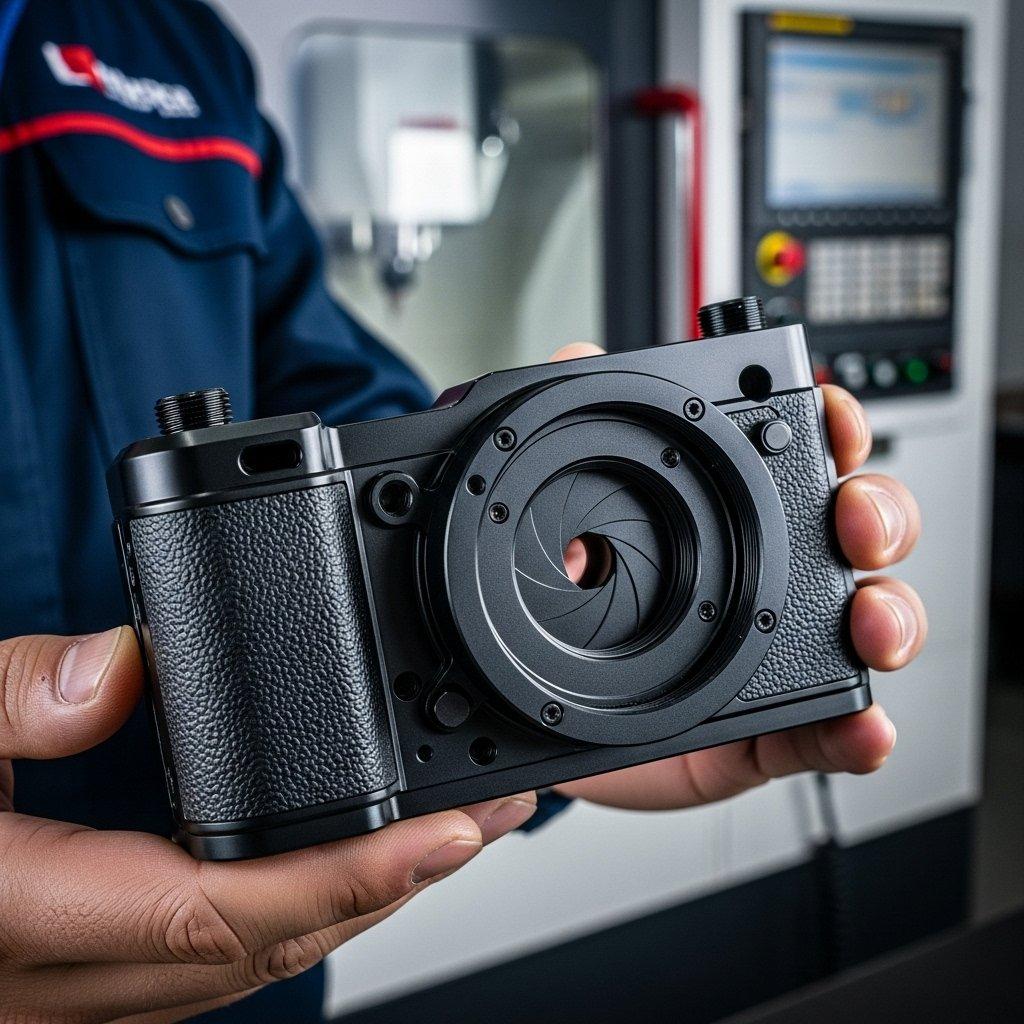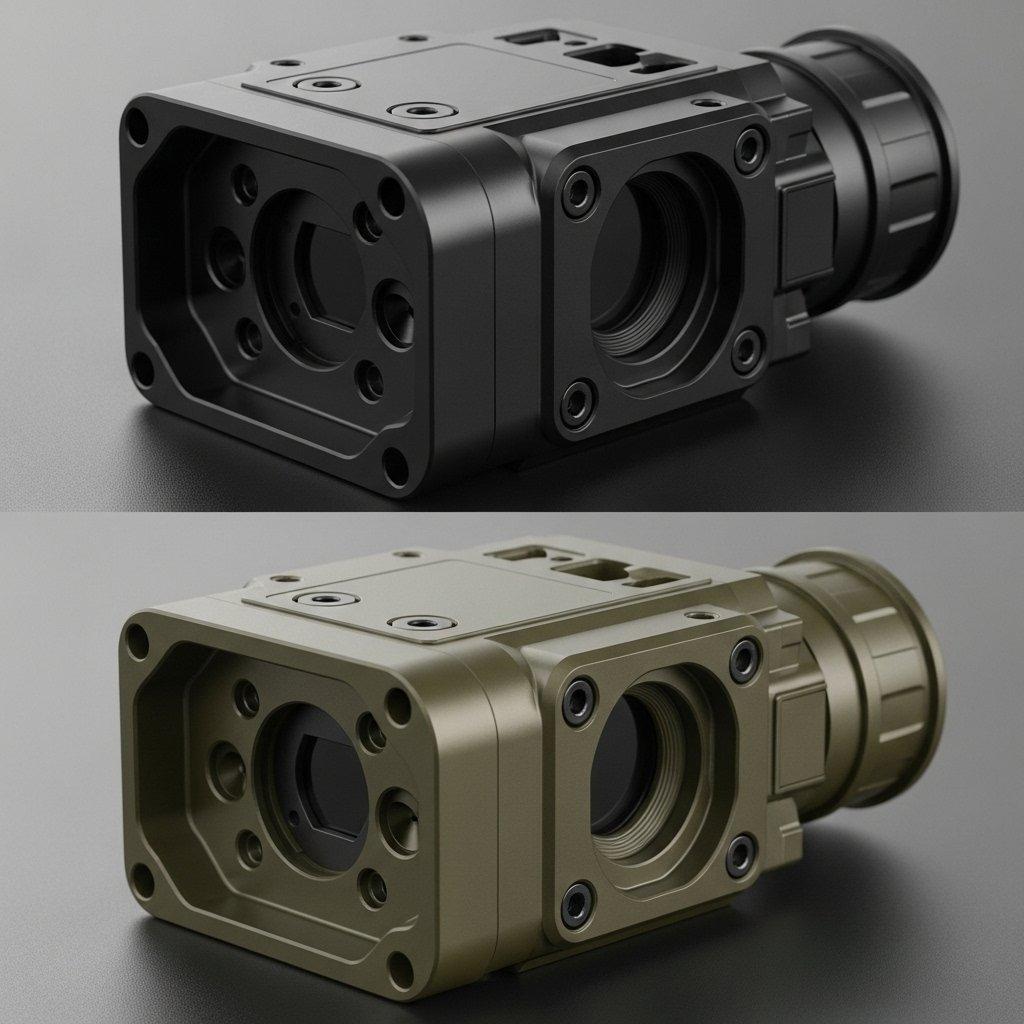Plastic CNC warping is a critical challenge. Prevent it by meticulous material selection, optimized part design, precision machining parameters, and disciplined post-processing techniques. This ensures polymer machining stability and avoids costly plastic deformation.
The unseen enemy of precision manufacturing, plastic CNC warping, silently jeopardizes project timelines and budget. Components that are designed to exact specifications can emerge from machining with unwelcome twists and bends, undermining functionality and increasing scrap rates.
This persistent issue often stems from a complex interplay of material properties, design choices, and manufacturing processes. Our deep experience at ly-machining has shown that understanding these plastic deformation causes is the first step toward robust CNC warping prevention.
Join us as we demystify the science behind plastic warping and reveal the proven strategies and precision techniques employed by ly-machining to deliver dimensionally stable, high-quality plastic parts every time.

Main Causes of Plastic CNC Warping
Understanding the root causes of plastic CNC warping is fundamental to its prevention. In our experience, deformation often results from a confluence of factors rather than a single isolated issue. Identifying these plastic deformation causes early is key.
Ignoring these elements can lead to significant production inefficiencies and compromised part integrity. We systematically address each potential cause to ensure optimal polymer machining stability.
Material selection errors
Choosing the wrong plastic for a CNC application is a primary cause of warping. Different polymers exhibit varying responses to stress, heat, and moisture during and after machining. Inappropriate material can lead to unpredictable dimensional instability.
Factors like crystallinity, glass transition temperature (Tg), and moisture absorption characteristics are critical considerations. An incorrect selection exacerbates the likelihood of plastic deformation.
Internal stress from manufacturing
Plastics often possess internal stresses from their original molding or extrusion processes. CNC machining can release these latent stresses, causing the material to relax and deform unevenly. This internal stress is a common plastic deformation cause.
Uneven material cooling or rapid solidification during initial manufacturing stages contributes significantly to this phenomenon. The material isn’t truly “at rest” before machining begins.
Improper machining parameters
Aggressive cutting speeds, excessive feed rates, and deep cuts generate considerable heat and mechanical stress. These parameters can overheat the plastic locally, leading to material softening and subsequent warping upon cooling. This directly impacts polymer machining stability.
Moreover, inadequate chip evacuation can cause heat buildup, further aggravating the risk of plastic deformation. Balancing speed and precision is crucial for CNC warping prevention.
Suboptimal part design
Part designs featuring drastic variations in wall thickness, sharp internal corners, or highly asymmetrical geometries are inherently prone to warping. These design elements create stress concentrators and uneven cooling rates. They are significant plastic deformation causes.
Such designs make it challenging to maintain uniform material behavior throughout the machining and cooling phases. Design for manufacturability is paramount in CNC warping prevention.
Post-processing impacts
Even after precise machining, improper handling, uncontrolled cooling, or insufficient stress relief can induce warping. Residual stresses from machining, if not managed, can manifest as deformation over time.
For instance, uncontrolled air cooling can lead to uneven thermal contraction across the part. This makes careful post-processing a vital step in preventing plastic CNC warping.

Material Factors in Plastic Warping
Understanding how different plastics behave under stress and temperature is critical for CNC warping prevention. ly-machining’s expertise in material science allows us to anticipate and mitigate plastic deformation causes. Each material presents unique challenges.
We rigorously evaluate material properties to ensure the highest polymer machining stability. This proactive approach minimizes risks associated with inherent plastic characteristics.
Amorphous vs. crystalline plastics
Amorphous plastics (e.g., PC, PMMA, PS) have a random molecular structure and soften gradually with heat. They typically exhibit more predictable, isotropic shrinkage but can still warp under thermal gradients.
Crystalline plastics (e.g., POM, Nylon, HDPE, PEEK) have organized molecular structures and sharp melting points. They often display higher, anisotropic (direction-dependent) shrinkage and are more prone to warping due to varying crystal formation.
| Characteristic | Amorphous Plastics | Crystalline Plastics |
|---|---|---|
| Molecular Structure | Random, disorganized | Ordered, semi-crystalline |
| Shrinkage | Lower, more isotropic | Higher, anisotropic |
| Softening | Gradual (Tg) | Sharp (Tm) |
| Warping Propensity | Thermal gradients | Uneven crystallization |
Thermal expansion coefficient
The Coefficient of Thermal Expansion (CTE) indicates how much a material expands or contracts with temperature changes. Plastics generally have significantly higher CTEs than metals. This makes them highly susceptible to thermal distortion during machining.
Uneven heating and cooling during CNC operations, combined with high CTE, can induce differential expansion and contraction, leading to severe plastic CNC warping. Managing thermal input is key.
Shrinkage and residual stress
All plastics exhibit some degree of shrinkage as they cool from processing temperatures. This shrinkage can be uneven, especially in parts with varying thicknesses or during rapid cooling. This contributes to internal stresses.
Machining can then release these latent stresses, causing the material to relax and deform, often in unexpected ways. Mitigating these inherent stresses is vital for polymer machining stability.
Moisture absorption issues
Some plastics, particularly nylons (PA), are hygroscopic, meaning they absorb moisture from the atmosphere. Moisture absorption causes the material to swell and can significantly alter its mechanical properties and dimensions.
Machining a plastic that is not properly conditioned can lead to dimensional instability and warping as it equilibrates with environmental humidity. Controlled storage and conditioning are crucial.

Design for Plastic Deformation Prevention
Effective CNC warping prevention begins long before a chip is cut, starting with intelligent part design. Our engineering consultation service focuses on “design for manufacturability” (DFM) specifically to minimize plastic deformation causes.
Working collaboratively with our clients, we review designs to identify potential stress points and recommend modifications. This proactive approach ensures optimal polymer machining stability from the outset.
Optimizing wall thickness
Variations in wall thickness are a major contributor to uneven cooling and stress buildup, leading to plastic CNC warping. Maintaining uniform wall thicknesses throughout the part, whenever possible, promotes consistent material behavior.
If varying thicknesses are unavoidable, transitions should be gradual rather than abrupt. This helps distribute stress more evenly, enhancing overall part stability.
Rib and support structures
Incorporating strategically placed ribs and support structures can significantly enhance a plastic part’s stiffness and resistance to warping. These features act as internal braces, counteracting deformation forces.
However, ribs themselves must be properly designed (e.g., appropriate thickness-to-wall ratios) to avoid creating new stress concentrators or sink marks. Their integration requires careful planning.
Corner radii & stress concentration
Sharp internal corners create stress concentration points, making these areas particularly vulnerable to cracking or warping. Always use generous radii on internal corners.
Rounding corners distributes stress over a larger area, reducing localized stress buildup during machining and post-processing. This is a simple yet effective CNC warping prevention strategy.
Minimizing asymmetrical features
Highly asymmetrical part designs often lead to uneven distribution of internal stresses and differential thermal contraction. This inherent imbalance makes them highly susceptible to plastic deformation.
Where possible, strive for design symmetry or incorporate balancing features to equalize stresses. If asymmetry is critical, advanced simulation and specialized machining strategies are essential.

Machining Methods to Prevent Warping
Even with optimal design and material selection, the machining process itself can introduce or exacerbate plastic CNC warping. ly-machining employs advanced machining methods specifically engineered for polymer machining stability. Our precision ensures minimal plastic deformation.
In our factory, every detail, from tool selection to chip removal, is meticulously controlled. This methodical approach is critical for effective CNC warping prevention.
Tool path optimization
Carefully planned tool paths are crucial for minimizing localized heat buildup and stress. We often use climb milling, which directs cutting forces into the workpiece, reducing chatter and heat.
Multi-pass, shallow cuts (step milling) rather than deep, single passes help to remove material gradually, dissipating heat more effectively and minimizing stress release. This is paramount for preventing plastic CNC warping.
Low-stress fixturing
Aggressive clamping can induce stress into a plastic part, which, when released after machining, results in warping. We utilize specialized low-stress fixturing techniques, often employing custom-designed soft jaws.
Vacuum fixtures or minimal-contact clamping solutions are also used to hold parts securely without deforming them. This approach maintains the part’s natural state throughout the machining process.
Cooling strategies & chip removal
Effective cooling and chip removal are essential for managing thermal input during machining. We utilize high-volume air blasts, coolants, or even refrigerated air to keep the workpiece and cutting zone at a consistent, moderate temperature.
Promptly removing chips prevents re-cutting, which generates more heat, and keeps the cutting edge clear. These measures prevent localized overheating, a major plastic deformation cause.
Step milling & shallow cuts
Instead of aggressive deep cuts, we employ a strategy of multiple, lighter passes (step milling). This progressive material removal generates less heat and allows any induced stress to dissipate gradually.
This technique is particularly effective for large or thin-walled plastic parts where dimensional stability is critical. It’s a cornerstone of our CNC warping prevention strategy.
Proper tooling selection
Sharp, specialized tools designed for plastics are essential. Tools with high rake angles, polished flutes, and specific geometries reduce friction and cutting forces, minimizing heat generation.
Using worn or incorrect tools can lead to excessive friction, melting, and poor surface finish, all of which contribute to plastic deformation. We select tooling precisely for each material.

Post-Machining Warp & Stress Relief
The journey to warp-free plastic parts doesn’t end when machining stops. Post-machining processes are equally vital for ensuring long-term polymer machining stability and preventing latent plastic CNC warping. Proper techniques can effectively neutralize residual stresses.
ly-machining implements controlled post-processing steps to achieve the highest possible dimensional accuracy. This holistic approach guarantees consistent part performance.
Annealing & stress relief
Annealing involves heating the machined plastic part to a specific temperature below its glass transition (Tg) or melting point (Tm), holding it for a period, and then slowly cooling it. This process allows molecular chains to re-align.
Annealing effectively reduces residual stresses introduced during manufacturing and machining. It is a critical step for enhancing the dimensional stability of many engineering plastics.

Controlled cooling & storage
After machining or annealing, controlled cooling is paramount. Rapid or uneven cooling can reintroduce stresses, undoing previous efforts. Parts should be allowed to cool slowly and uniformly in a stable environment.
Proper storage, away from extreme temperatures and humidity, also prevents environmental factors from causing plastic deformation. Consistent conditions are key to maintaining stability.
Surface finishing effects
Surface finishing processes, such as polishing or vapor smoothing, can sometimes induce or relieve minor surface stresses. While usually less impactful than bulk thermal processes, their effects should not be overlooked for highly critical parts.
It’s essential to understand how any post-machining surface treatment might subtly alter the part’s dimensional stability. We consider these details in our comprehensive process planning.
Our Expertise: Solving Plastic Warping
At ly-machining, we stand as a premier source manufacturer, and our expertise is your guarantee against plastic CNC warping. Our commitment to precision, quality, and technical depth is unmatched. We transform complex challenges into successful outcomes.
We don’t just machine parts; we provide solutions backed by extensive engineering knowledge and state-of-the-art capabilities. Our focus is on comprehensive CNC warping prevention.
Advanced material analysis
Our engineers possess a deep understanding of polymer science. We conduct thorough material analysis, including thermal and mechanical property assessment, to predict how specific plastics will behave during machining.
This allows us to tailor processes for optimal polymer machining stability, selecting the right material and parameters from the very start. We proactively address plastic deformation causes.
Precision machining capabilities
Equipped with advanced multi-axis CNC machines and climate-controlled environments, we maintain the tightest tolerances possible. Our machines are calibrated for the unique challenges of plastic machining.
This precision minimizes thermal buildup and mechanical stress, directly contributing to warp-free parts. Our capabilities are central to effective plastic CNC warping prevention.

Comprehensive quality control
Every part undergoes rigorous inspection using advanced metrology equipment. We monitor dimensions and ensure adherence to specifications at every stage, not just at the final step.
This multi-stage quality control system quickly identifies any deviation, allowing for immediate adjustments and guaranteeing dimensional accuracy. Our goal is zero-defect output.
Engineering consultation for prevention
We partner with clients from design inception, offering expert consultation to optimize part geometry and material selection for manufacturability and warp prevention. Our engineering team acts as an extension of yours.
This collaborative approach leverages our extensive experience to mitigate potential plastic deformation causes before they become costly problems. It is a core tenet of our service.
Partner for Warp-Free Plastic CNC Parts
Choosing ly-machining means selecting a partner dedicated to delivering unparalleled quality and reliability in plastic CNC machining. We eliminate the uncertainty and frustration often associated with plastic CNC warping. Experience true polymer machining stability.
Our comprehensive approach to CNC warping prevention ensures your projects remain on track and within budget. We are committed to your success.
Transparent process & pricing
We believe in full transparency, from detailed process planning to clear, competitive pricing. You will have a clear understanding of how your parts are manufactured and the cost involved.
There are no hidden fees or unexpected quality issues when you partner with us. Our objective is to build lasting, trust-based relationships.

Guaranteeing dimensional accuracy
Our specialized techniques and stringent quality control protocols guarantee the dimensional accuracy of your plastic parts. We stand behind the quality and stability of every component we produce.
You can rely on us for parts that fit perfectly and perform reliably, reducing assembly issues and field failures. We ensure consistent polymer machining stability.
Reduce scrap, save costs
By proactively preventing plastic CNC warping, we significantly reduce scrap rates and rework. This translates directly into substantial cost savings and faster lead times for your projects.
Our efficient processes and high first-pass yield optimize your supply chain and enhance your overall profitability. Let us help you eliminate costly plastic deformation.
Case Study: Eliminating Warping for a Critical Medical Device
Problem: A client approached us with a challenging issue for a new medical device. Their existing supplier was consistently producing large, thin-walled polycarbonate enclosures with unacceptable levels of plastic CNC warping, leading to high scrap rates and project delays. The precise internal features were also being distorted.
Our Solution: Our engineering team initiated a comprehensive review. We identified that the original material choice was adequate, but the design had some wall thickness inconsistencies and the previous supplier’s machining parameters were too aggressive, causing localized thermal stress. We redesigned the fixturing for low-stress clamping and developed an optimized, multi-pass toolpath with enhanced cooling specifically for polycarbonate. We also implemented a post-machining annealing process in a controlled environment.
Result: ly-machining successfully produced a batch of polycarbonate enclosures that met all dimensional tolerances, completely free of warping. The client not only achieved their critical product launch deadline but also saw a significant reduction in unit cost due to our drastically reduced scrap rate and efficient process. Our solution provided the polymer machining stability required for their innovative medical device.
Don’t let plastic CNC warping compromise your next project. Contact our engineering specialists today for a detailed consultation and discover how our expertise ensures precision, quality, and predictability for your custom plastic CNC parts.
FAQ: What causes plastics to warp during CNC?
A common cause of plastic CNC warping is the release of internal stresses already present in the material. These stresses can be inherent from the original molding process or induced by excessive heat and cutting forces during machining. Uneven thermal expansion and contraction also contribute significantly.
Poor part design, such as varying wall thicknesses, can exacerbate this issue. It leads to differential cooling and stress accumulation throughout the component.
How can I prevent plastic deformation?
Preventing plastic deformation requires a multi-faceted approach. Start with careful material selection and optimize part design for uniform wall thickness and features. Implement precise, low-stress machining parameters with effective cooling.
Finally, utilize post-machining stress relief methods like annealing. This holistic strategy minimizes plastic deformation.
Is annealing always necessary for plastics?
Annealing is not always strictly necessary for all plastic parts, but it is highly recommended for critical components. It is particularly beneficial for parts requiring high dimensional stability.
This process effectively relieves residual stresses, enhancing the part’s long-term performance and preventing potential plastic CNC warping. We often advise annealing for engineering plastics.




